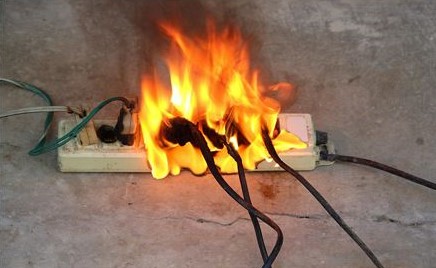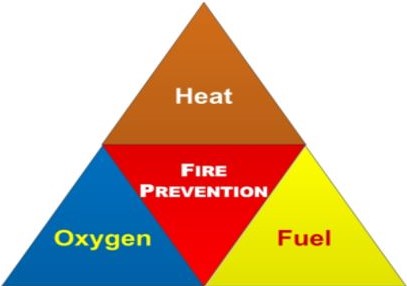
Fire prevention is important for every workplace no matter the industry, since fire can happen anywhere at any time. Each facility should adhere to established fire safety precautions, perform a thorough assessment of fire hazards, have an extensive understanding of firefighting equipment, and have a comprehensive fire emergency plan in place. Through fire safety training and preparation, you can help reduce the risk of a fire breaking out in your facility, and ensure that workers know what to do if one does occur.
Causes of Fire in the Workplace
Human Error
With so many people often using the workplace on a daily basis, human error can be a common factor in the causes of fires. From using equipment incorrectly, not reporting faulty machinery, to even leaving cooking food unattended, accidents can easily occur without the proper training in place.
Faulty electrical equipment
Faulty electrical equipment is one of the most common causes of workplace fires. Whether it is loose wires, overloaded plugs or faulty connections, electrical equipment which has been damaged or neglected can have extremely dangerous consequences.
Flammable and Combustible Materials
Improper storage of these materials is a common contributor to workplace fires. Offices in particular tend to be stuffed with highly combustible materials, with files and folders of paper and cardboard, as well as wooden furniture and other constructions. These can lead fires to spread rapidly through occupied areas in the workplace.
Negligence
Accidental fires are probably always going to be possible, but negligence really shouldn’t happen at all. A startling amount of workplace fires are caused by simply not caring about the risk, not recognising negligent behaviour, or not following safe practices.
Arson
Arson is a prominent cause of workplace fires. Unfortunately. A large percentage of workplace fires are malicious in nature, either as revenge arson attacks or vandalism. While there is probably little you can do to stop a determined arsonist, never ignore other signs that the workplace is being visited by unwanted guests.
Overloaded plug sockets
If you work in an office, you are going to be using a lot of electrical appliances. Whether it be the computer on your desk or the electric kettle and microwave oven in the canteen, most common workplaces use electricity to function and rely on a ton of appliances plugged into the wall.
Overloading these plug sockets can be a fairly common cause of electrical fires. If you are using faulty extension leads or have stuffed too many appliances into the same plug socket, you can increase the potential fire risk due to overheating.

Recognizing Fire Hazards
Fire prevention begins by identifying the basic properties of fire. All fires start when heat (a source of ignition) comes into contact with fuel (anything that burns) and oxygen is present. To prevent a fire the goal is to keep sources of ignition and fuel apart.

How to Prevent Workplace Fires
Fire safety training teaches workers how to prevent fires. If workers are aware of the best ways to prevent fires, they can contribute significantly to a safer workplace.
The following are tips to prevent fires in the workplace:
1. Keep the workplace clean by following good housekeeping practises.
2. Smoke only in designated areas and extinguish smoking materials safely. Never smoke in storerooms or chemical storage areas.
3. Mark hazards and potential fire risks with clear, visible signage. Post emergency telephone numbers and the company address by the telephone in all work areas.
4. Keep machinery cleaned and properly lubricated to prevent overheating and friction sparks.
5. Place oily rags in a covered metal container. This waste must be properly disposed of on a regular basis.
6. Have faulty wiring and malfunctioning electrical equipment repaired promptly. Never attempt electrical repairs unless you are qualified and authorized.
7. Conduct a fire risk assessment in order to identify and eliminate fire hazards
8. Avoid overloading plug sockets.
9. Store electrical appliances safely and turn them off when not in use.
10. Designate a fire warden to maintain and implement the fire safety procedures in the workplace.
11. Create a fire prevention plan which should be communicated to everyone in the workplace.
12. Install and test smoke detectors. Smoke detectors are one of the simplest, most effective things you can do for fire prevention in the workplace.
13. Conduct periodic fire drills by using the test feature on your smoke alarms, to ensure that everyone knows how to react in the event of an emergency.
14. Make sure employees are trained in fire safety.
15. Avoid running electrical cords or wires under rugs and carpets or near a heat source; keep them out of doorways where they can become worn.
16. Maintain open access to all electrical control panels. Material or equipment stored in front of the panels could delay power shutdowns in emergency situations.
17. Use and store chemicals safely. Read the labels and the Safety Data Sheets (SDS) to learn about flammability and other fire hazards. Provide adequate ventilation when using and storing these substances.
18. Be aware of possible ignition sources when working in potentially explosive atmospheres, such as those containing flammable liquid vapours. Use non-sparking tools and control static electricity as required.
19. Never block sprinklers, firefighting equipment, or emergency exits. Observe clearances when stacking materials.
20. Learn how to properly use a fire extinguisher. Know where fire extinguishers are located and which extinguishers to use for the specific type of fire.
Conclusion
Everyone is responsible for preventing fires in the workplace – employers and employees alike. In addition to possible injury and loss of life, a serious fire can close down a workplace resulting in significant job losses. It is possible to reduce the threat of fire to people and property by teaching everyone to work together to prevent fires with comprehensive fire safety training.
Contact us for our fire fighting and prevention training by visiting our website: www.primeliftsafetyng.com or call us on +234 8037957878. Email: training@primeliftsafetyng.com










